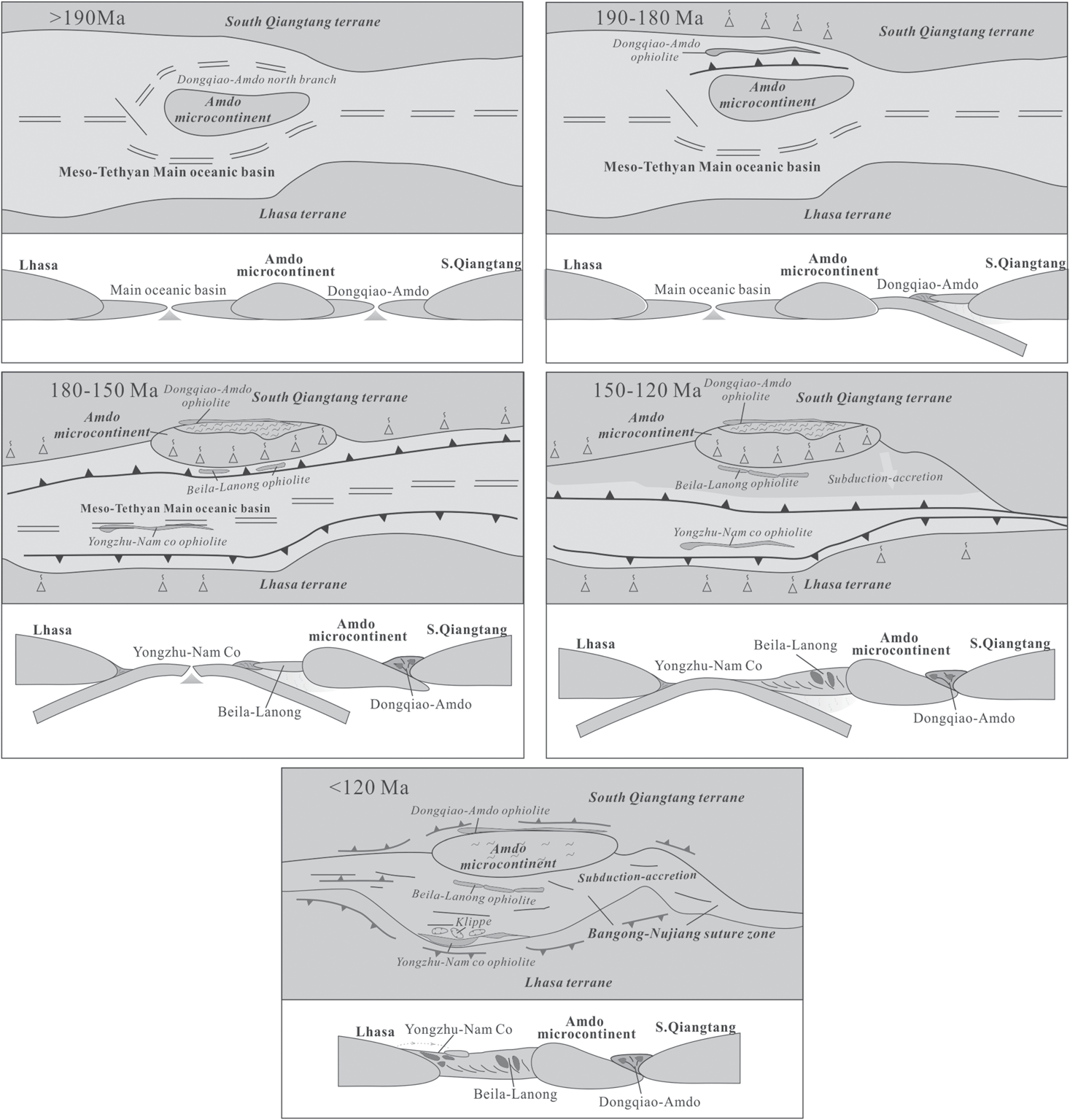91755103-GSAB:First mid-ocean ridge-type ophiolite from the Meso-Tethys suture zone in the north-central Tibetan plateau
ABSTRACT
The Meso-Tethys was a late Paleozoic to Mesozoic ocean basin between the Cimmerian continent and Gondwana. Part of its relicts is exposed in the Bangong–Nujiang suture zone, in the north-central Tibetan Plateau, that played a key role in the evolution of the Tibetan plateau before the India Asia collision. A Penrose-type ophiolitic sequence was newly discovered in the Ren Co area in the middle of the Bangong–Nujiang suture zone, which comprises serpentinized peridotites, layered and isotropic gabbros, sheeted dikes, pillow and massive basalts,and red cherts. Zircon U-Pb dating of gabbros and plagiogranites yielded 206 Pb/ 238 U ages of 169–147 Ma, constraining the timing of formation of the Ren Co ophiolite.The mafic rocks(i.e., basalt, diabase, and gabbro) in the ophiolite have uniform geochemical compositions, coupled with normal mid-ocean ridge basalt-type trace element patterns. Moreover, the samples have positive whole-rock ε Nd (t) [+9.2 to +8.3], zircon ε Hf (t) [+17 to +13], and mantle-like δ 18 O(5.8–4.3‰) values. These features suggest that the Ren Co ophiolite is typical of midocean ridge-type ophiolite that is identified for the first time in the Bangong–Nujiang suture zone. We argue that the Ren Co ophiolite is the relic of a fast-spreading ridge that occurred in the main oceanic basin of the Bangong–Nujiang segment of Meso-Tethys.Here the Meso-Tethyan orogeny involves a continuous history of oceanic subduction, accretion, and continental assembly from the Early Jurassic to Early Cretaceous.

.png)
